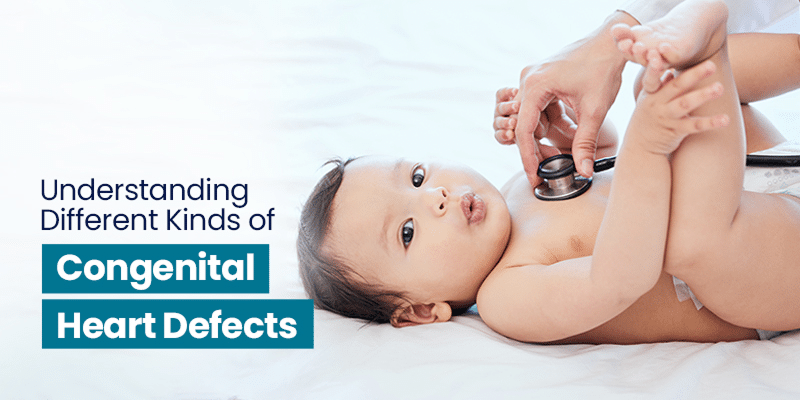- Open 24/7
- psh@paruluniversity.ac.in
- Emergency Contact - 9016668241/9016668136/18008899774

The heart is one of the most vital organs in the human body, ensuring blood circulation and oxygen supply. However, some individuals are born with structural heart problems known as Congenital Heart Defects (CHDs). These conditions affect the normal function of the heart and adversely affecting oxygen supply to other organs.
CHDs are among the most common birth defects, affecting nearly 1 in 100 newborns worldwide. While some defects are simple and may not require treatment, others can significantly impact a child’s health. Understanding the different types of CHDs, their causes, symptoms, and treatment options can help parents and caregivers make informed decisions for their child’s well-being.
Congenital Heart Defects can be categorized into three broad groups:
These are most common type of defects, where because of heart defects, lungs end up receiving significantly high proportion of blood at a high pressure, making children suspectable to frequent lung infections and poor growth.
Examples include:
Here, the impure blood which is deficient in oxygen is shunted back into the blood rather than into the lungs. This leads to a bluish discoloration on the skin, lips, and nails. These conditions include:
These defects involve blockages or narrow pathways that hinder normal blood flow. Common conditions include:
The exact cause of most congenital heart defects remains unknown, but several factors can increase the risk:
Early detection of CHDs is crucial for timely intervention. Many congenital heart defects are diagnosed during pregnancy through fetal echocardiography, while others may be detected after birth through. The most common tools to pick up congenital heart diseases are clinical evaluation and echocardiogram (sonography of heart) with an age-appropriate machines.
The treatment of CHDs depends on the type and severity of the defect. Some mild cases may not require immediate treatment, while others may need medical intervention.
Certain CHDs can be managed with medications that help regulate heart function, reduce fluid buildup, or control blood pressure.
Minimally invasive procedures like cardiac catheterization allow doctors to repair heart defects without open-heart surgery. This approach is often used for closing septal defects (ASD, VSD) or expanding narrowed valves (balloon valvuloplasty).
For more complex CHDs, surgical intervention may be required. Open-heart surgery can correct structural defects, while some severe cases may necessitate multiple surgeries over time to ensure proper heart function. Parul Sevashram Hospital, recognized as the best heart hospital in Vadodara, offers advanced cardiac surgical procedures to treat congenital heart defects with precision and care.
In rare cases, when the heart defect is too complex for repair, a heart transplant may be considered as a last resort.
Congenital heart disease, being the most common congenital defects, bar children from attaining their full growth potential. Surgical and catheter-based treatments options are available since 1940s. Almost two thirds of the congenital heart diseases are completely curable with near normal longterm outcomes without medications.
Children born with congenital heart defects often require lifelong monitoring and specialized care to ensure optimal health.
The most important factors changing the outcome for of kid with congenital heart disease are parents’ commitment to get their kids treated and availability of a dedicated team to carry out the treatment.
At Parul Sevashram Hospital, there is a dedicated pediatric cardiology OPD where clinical evaluation and diagnostic echocardiogram is being carried out. The treatment team includes cardiac surgeon, team of cardiac anesthetists, pediatric ICU care team, physiotherapist, nursing, dietian and supportive staff.
Regular follow-up visits with a pediatric cardiologist, a healthy diet, and appropriate physical activity play a significant role in long-term heart health. Advances in medical technology and expert care from hospitals like Parul Sevashram Hospital, the best hospital in Vadodara, make it possible for CHD patients to receive world-class treatment and support.
If you or a loved one is dealing with a congenital heart defect, early detection and the right medical guidance can make all the difference. Seek expert advice and take proactive steps to ensure a healthier future.
Written by Parul Sevashram Hospital | 8 April 2025

